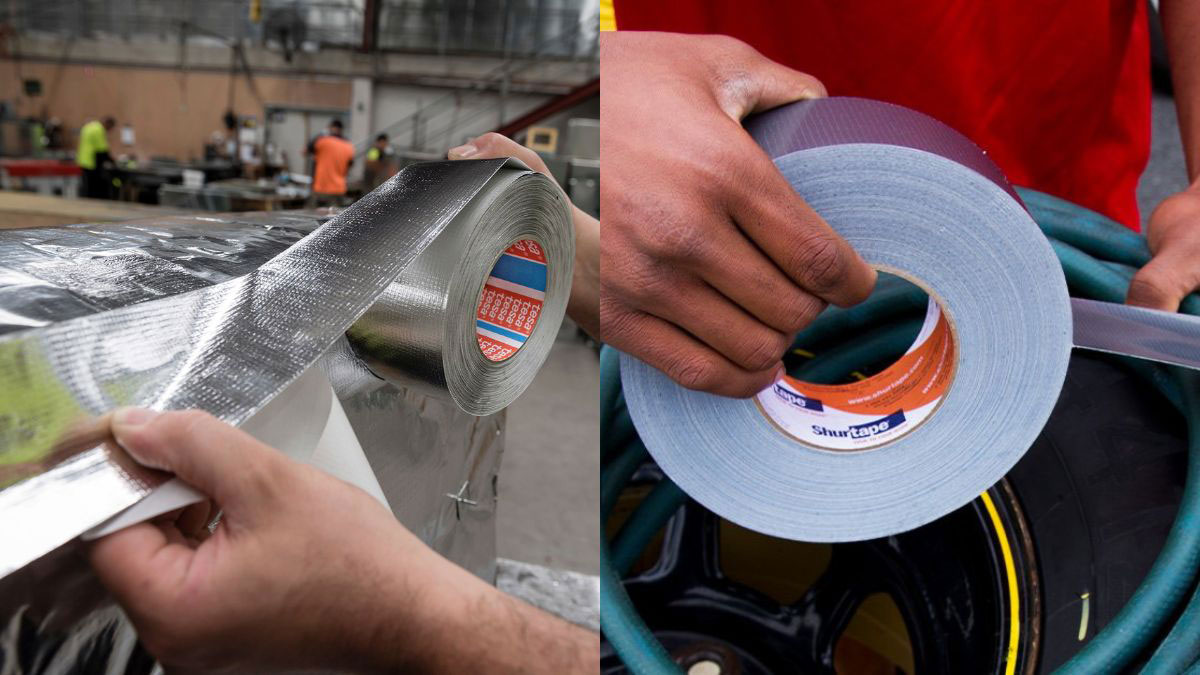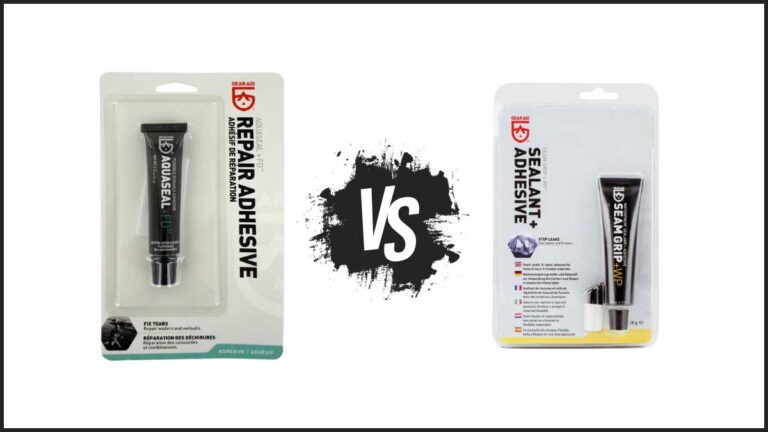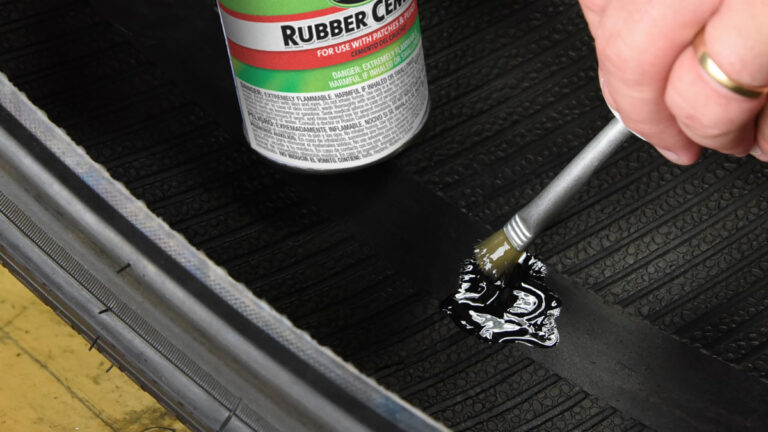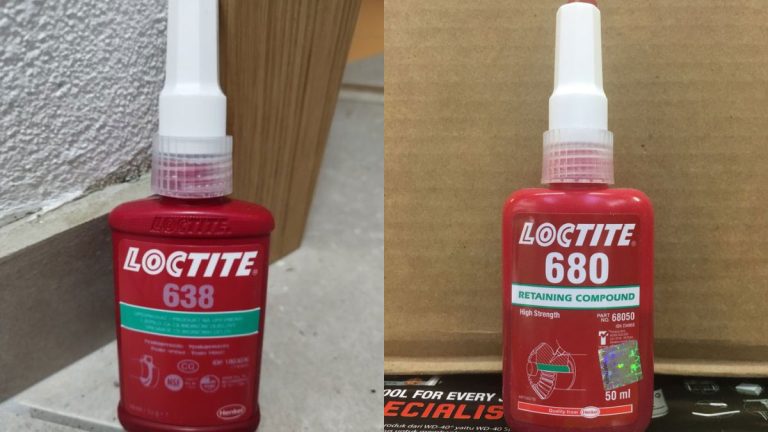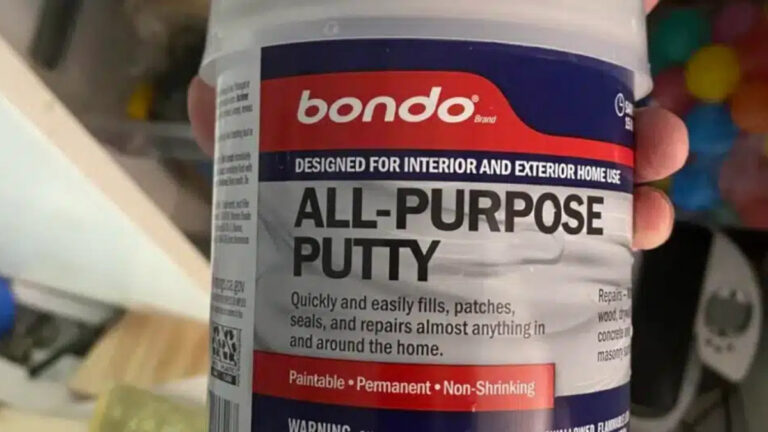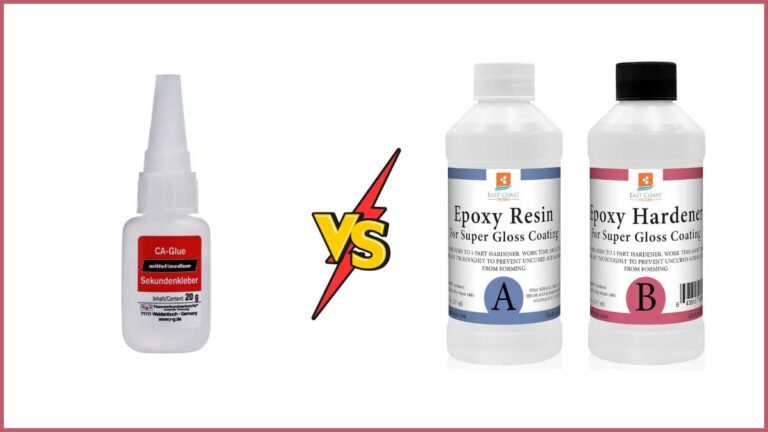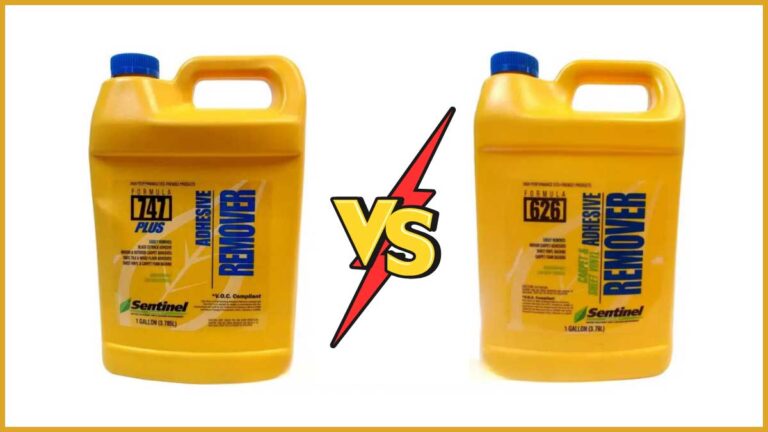Foil Tape vs Duct Tape: Which is Best for Your DIY Projects?
When it comes to tackling home repairs or DIY projects, choosing the right tape can make all the difference. You might find yourself torn between foil tape and duct tape, each boasting unique properties and applications. Understanding these differences will help you make an well-informed choice that ensures your project’s success.
Foil tape offers exceptional durability and heat resistance, making it ideal for HVAC systems and insulation. On the other hand, duct tape is celebrated for its versatility and strong adhesive properties, perfect for quick fixes and general-purpose repairs. By comparing the strengths and weaknesses of both, you’ll be better equipped to choose the best tape for your specific needs.
Key Takeaways
- Foil Tape is Ideal for High-Temperature and Moisture-Heavy Environments: Foil tape is highly durable, moisture-resistant, and can withstand extreme temperatures, making it perfect for HVAC systems, insulation projects, and applications requiring long-term stability.
- Duct Tape Offers Versatility for Everyday Repairs: While duct tape is less durable and heat-resistant compared to foil tape, its strong adhesive properties, flexibility, and cost-effectiveness make it suitable for quick fixes, general-purpose repairs, and bundling items.
- Material and Construction Differences: Foil tape is made from aluminum foil with an acrylic adhesive, providing excellent resistance to moisture and temperature fluctuations. Duct tape comprises a fabric backing with a rubber-based adhesive, offering flexibility and ease of use.
- Longevity and Durability Factors: Foil tape maintains its adhesive strength over time and does not degrade, while duct tape can break down, especially when exposed to heat or UV light.
- Specific Use Cases: Use foil tape for sealing duct leaks, wrapping insulation, and creating moisture barriers. Opt for duct tape for temporary sealing, bundling materials, quick household repairs, and craft projects.
- Cost Considerations: Foil tape generally costs more but offers specialized benefits like high-temperature tolerance and durability. Duct tape is more affordable and widely available, making it convenient for various short-term applications.
Differences Between Foil Tape and Duct Tape
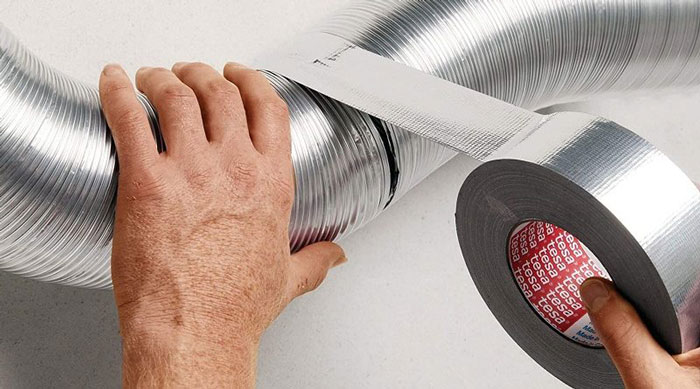
Materials and Construction
Foil Tape: Made from aluminum foil with an acrylic adhesive. This composition makes it malleable, durable, and resistant to moisture, vapor, and temperature fluctuations.
Duct Tape: Constructed from a fabric backing, often polyethylene or cloth, combined with a rubber-based adhesive. This blend provides flexibility and adherence to various surfaces.
Temperature Resistance
Foil Tape: Withstands extreme temperatures, ranging from -30°C to 120°C. This makes it ideal for HVAC systems and applications requiring high-temperature resilience.
Duct Tape: Exhibits low heat resistance and can burn or degrade at high temperatures. It’s best for applications not exposed to significant heat.
Longevity
Foil Tape: Known for long-term durability and stability. It doesn’t shrink or fail over time, which makes it suitable for long-lasting solutions.
Duct Tape: Tends to break down over time, especially when exposed to heat or UV light. It becomes brittle and loses adhesive properties, reducing its longevity.
Comparison Table
| Feature | Foil Tape | Duct Tape |
|---|---|---|
| Material | Aluminum foil with acrylic adhesive | Fabric backing with rubber adhesive |
| Temperature Range | -30°C to 120°C | Low heat resistance |
| Longevity | Long-lasting and durable | Breaks down over time |
| Moisture Resistance | High | Moderate |
| Use Case Examples | HVAC systems, insulation | Quick fixes, general repairs |
Use Case Examples
Foil Tape: Suitable for HVAC systems, insulation projects, and scenarios requiring high temperature and moisture resistance.
Duct Tape: Ideal for temporary repairs, bundling items, and general-purpose fixes. It’s versatile for many quick and easy solutions but lacks long-term resilience.
By understanding these distinctions, you can choose the right tape for your projects, balancing durability, temperature resistance, and application needs.
Key Uses for Each Type of Tape
When selecting the right tape for your project, understanding the specific applications of foil tape and duct tape is crucial. Each type has its strengths, making it uniquely suited for particular tasks.
HVAC Applications
Foil Tape: Foil tape is indispensable in HVAC systems. Made from aluminum foil with a pressure-sensitive adhesive, it’s perfect for sealing air ducts. Its heat resistance and durability, combined with its ability to maintain adhesive properties in high temperatures, make it ideal for:
- Sealing Duct Leaks: Prevents air leakage in ductwork, improving system efficiency.
- Wrapping Insulation: Protects insulation on pipes and ducts from damage and moisture.
- General Repairs: Repairs minor damage in HVAC systems without compromising performance.
Duct Tape: Duct tape fails in HVAC applications due to heat sensitivity. It loses adhesive strength under high temperatures, making it unreliable. Instead, reserve it for non-heat-exposed tasks.
Construction Projects
Foil Tape: In construction, foil tape is best for tasks requiring heat resistance and durability:
- Insulation: Secures insulation materials in place even in hot environments.
- Vapor Barriers: Creates moisture barriers in walls and roofs.
- Reflective Surfaces: Enhances energy efficiency by reflecting heat away from sensitive areas.
Duct Tape: Duct tape shines in construction for quick fixes and general-purpose repairs:
- Sealing: Temporarily seals gaps and holes in construction materials.
- Bundling: Bundles wires, pipes, and other materials for organization.
- Surface Protection: Protects surfaces from dust and debris during painting or renovations.
Electrical Systems
Foil Tape: Foil tape in electrical systems provides excellent shielding against electromagnetic interference (EMI) and radio-frequency interference (RFI):
- Cable Shielding: Shields cables and wires to prevent signal interference.
- Component Protection: Wraps around sensitive electrical components to block external interference.
- Grounding: Useful in grounding applications due to its conductive properties.
Duct Tape: While duct tape is not ideal for electrical systems, it’s occasionally used for:
- Temporary Fixes: Provides temporary solutions for minor wire or component repairs.
- Marking: Marks cables and components for easy identification during installation.
By understanding these distinct applications, you can make informed choices that ensure the best performance and durability for your projects.
| Application | Foil Tape | Duct Tape |
|---|---|---|
| HVAC | Sealing Ducts, Wrapping Insulation | Not suitable due to heat sensitivity |
| Construction | Insulation, Vapor Barriers, Reflective Surfaces | Sealing, Bundling, Surface Protection |
| Electrical Systems | Cable Shielding, Component Protection, Grounding | Temporary Fixes, Marking |
Make the right tape choice to achieve optimal results in your home repairs, DIY endeavors, and professional projects.
Pros and Cons of Foil Tape
Foil tape, a versatile adhesive tool, finds extensive use in various environments, especially HVAC systems. This section explores the advantages and disadvantages of using foil tape in different applications.
Pros of Foil Tape
Temperature Resistance
- Heat Tolerance: Foil tape handles extreme temperatures, making it ideal for HVAC systems with hot air. It resists both high and low temperatures without compromising its adhesive properties.
Moisture Resistance
- Waterproofing Capabilities: Foil tape is waterproof and can withstand moisture and humidity. This characteristic is crucial for sealing joints and seams in HVAC setups.
Durability
- Long-lasting Performance: Foil tape is more durable and provides a permanent seal if applied correctly. Unlike duct tape that degrades over time, foil tape maintains its adhesive strength even when exposed to heat.
Adhesive Properties
- High-tack Adhesion: Foil tape features a synthetic rubber or acrylic adhesive, ensuring a strong bond. It also leaves minimal residue upon removal, which is less common with duct tape.
Cons of Foil Tape
Flexibility
- Limited Stretch: Though durable, foil tape lacks the flexibility of duct tape. Its rigidity makes it less suitable for surfaces requiring a more pliable seal.
Handling Difficulties
- Application Complexity: Applying foil tape can be more challenging than using duct tape. Proper alignment and smoothing are essential to avoid wrinkling during installation.
Cost
- Higher Price Point: Foil tape generally costs more than duct tape. This price difference is due to its specialized properties and materials, making it a more significant investment for large projects.
Summary
Foil tape excels in durable, moisture-resistant, and temperature-resilient applications, especially in HVAC systems. But, consider the complexity of handling and cost when choosing foil tape for your project. Understanding these pros and cons helps optimize the tape’s potential in specific environments.
- HVAC (Heating, Ventilation, and Air Conditioning): Systems used for regulating indoor air quality and temperature.
- Adhesive Properties: Characteristics defining how a tape sticks to surfaces.
Action Point: Choose foil tape when durability, moisture resistance, and temperature tolerance are critical for your project, even though handling complexities and higher costs.
Pros and Cons of Duct Tape
When choosing the right tape for home repairs or DIY projects, understanding the pros and cons of duct tape can help you make informed decisions.
Pros of Duct Tape
- Versatility:
- Duct tape adheres to various surfaces including wood, metal, plastic, and fabric.
- Ideal for a wide range of tasks like household repairs, arts and crafts, and bundling items.
- Ease of Use:
- Simple to cut and apply by hand, making it convenient for quick fixes.
- Available in multiple colors, allowing for use in both functional and decorative applications.
- Cost-Effectiveness:
- Generally cheaper than specialized tapes like foil tape.
- Widely available in stores and online.
- Water Resistance:
- Provides a moderate level of water resistance, suitable for temporary outdoor repairs.
- Useful for short-term sealing of leaks and protecting surfaces from moisture.
Cons of Duct Tape
- Temperature Resistance Limitations:
- Not suitable for high-temperature conditions; adhesive tends to dry out and lose its stickiness.
- Not recommended for HVAC systems due to poor heat resistance.
- Durability Issues:
- Prone to degradation over time, especially when exposed to heat or UV light.
- Adhesive can dry out and the tape may peel off from surfaces after extended periods.
- Residue:
- Leaves behind a sticky residue, which can be difficult to clean from surfaces.
- May damage delicate surfaces upon removal.
| Feature | Duct Tape | Foil Tape |
|---|---|---|
| Material | Woven fabrics | Aluminum foil |
| Adhesive | Rubber-based | Pressure-sensitive |
| Temperature Resistance | Low | High |
| Durability | Moderate | High |
| Water Resistance | Moderate | High |
| Cost | Low | High |
Understanding these pros and cons helps you determine when to use duct tape effectively. For tasks requiring flexibility, quick fixes, or budget-friendly solutions, duct tape remains a reliable choice. But, for applications demanding high temperature and moisture resistance, alternative tapes like foil tape offer greater durability and performance.
Choosing the Right Tape for Your Needs
Selecting between foil tape and duct tape depends on understanding their specific properties and optimal applications.
Key Properties
- Foil Tape: Made from aluminum foil with synthetic rubber or acrylic adhesive.
- Heat resistance up to 248°F (120°C)
- Excellent moisture barrier
- Ideal for HVAC and insulation applications
- Duct Tape: Made from polyester, nylon, or rayon fabric with a rubber-based adhesive.
- Suitable for quick repairs and general household use
- Not recommended for high-heat situations
- Versatile and easy to apply
Uses
- Foil Tape:
- HVAC Systems: Perfect for sealing duct joints and seams due to high-temperature and moisture resistance.
- Insulation Panels: Ideal for wrapping and securing.
- Automotive and Metal Work: Withstands extreme temperatures, making it suitable for these applications.
- Duct Tape:
- Temporary Repairs: Handy for quick fixes and bundling items.
- Household Uses: Suitable for general-purpose fixes but avoid use in heat-sensitive areas.
Comparison Table
| Feature | Foil Tape | Duct Tape |
|---|---|---|
| Material | Aluminum foil | Fabric (polyester, nylon, rayon) |
| Adhesive Type | Synthetic rubber/acrylic | Rubber-based |
| Temperature Range | -30°C to 120°C | Low heat resistance |
| Durability | High, does not degrade | Moderate, can break down with UV |
| Water Resistance | Excellent | Moderate |
| Cost | Higher | Lower |
Summary
Foil tape excels in high-heat, moisture-heavy environments like HVAC systems and insulation projects. It’s durable and provides a long-lasting seal. On the other hand, duct tape’s versatility makes it great for everyday repairs and general-purpose uses. Choosing the right tape ensures optimal performance for your projects, balancing durability, temperature resistance, and specific application requirements.
Conclusion
Choosing between foil tape and duct tape eventually comes down to understanding their unique properties and intended applications. Foil tape offers unmatched durability and heat resistance, making it the go-to choice for HVAC systems and insulation projects. On the other hand, duct tape’s versatility and strong adhesive make it ideal for quick, everyday repairs.
By recognizing the strengths and limitations of each tape, you can ensure that your home repairs and DIY projects are both effective and long-lasting. Whether you need the specialized properties of foil tape or the general utility of duct tape, making an well-informed choice will lead to optimal results.
Frequently Asked Questions
Why is foil tape recommended for HVAC systems?
Foil tape is ideal for HVAC systems due to its heat resistance, flame resistance, and strong adhesive properties. It withstands extreme temperatures and high humidity, ensuring long-term durability and effective sealing.
What makes duct tape versatile for general repairs?
Duct tape is known for its strong adhesive and flexibility, making it suitable for a wide range of quick fixes and temporary repairs. Its ability to adhere to various surfaces further enhances its versatility in everyday applications.
How does the temperature resistance of foil tape compare to duct tape?
Foil tape can withstand extreme temperatures ranging from -30°C to 120°C, while duct tape has low heat resistance and may degrade under high temperatures. This makes foil tape better suited for high-temperature applications.
Can foil tape be used outdoors?
Yes, foil tape is suitable for outdoor use due to its moisture and temperature resistance. It can handle various weather conditions, making it ideal for sealing leaks in pipes, gutters, and other outdoor applications.
What are the primary differences in materials and construction between foil tape and duct tape?
Foil tape is made from aluminum foil with an acrylic adhesive, offering malleability, durability, and high-temperature resistance. Duct tape, on the other hand, consists of a fabric backing combined with a rubber-based adhesive, providing flexibility and strong adhesion.
What are the advantages of using foil tape over duct tape?
Foil tape offers superior heat and moisture resistance, long-lasting performance, and strong adhesive properties. It is ideal for high-temperature applications and long-term sealing solutions.
Are there any disadvantages to using foil tape?
Foil tape’s drawbacks include limited flexibility, handling difficulties during application, and a higher price point compared to duct tape. It may not be the best choice for repairs requiring high flexibility.
What are some common uses of duct tape?
Duct tape is commonly used for sealing gaps, bundling materials, surface protection, and temporary repairs. Its strong adhesive and flexibility make it suitable for various household and industrial applications.
How does water resistance differ between foil tape and duct tape?
Foil tape excels in water resistance, making it suitable for moisture-heavy environments, while duct tape offers moderate water resistance and may not perform well in consistently wet conditions.
How long does foil tape typically last?
High-quality foil tape can last several years if properly applied and maintained, thanks to its durability and resistance to environmental factors.
Is duct tape effective for high-temperature environments?
No, duct tape is not recommended for high-temperature environments as it lacks heat resistance and can degrade or fail when exposed to high temperatures.

